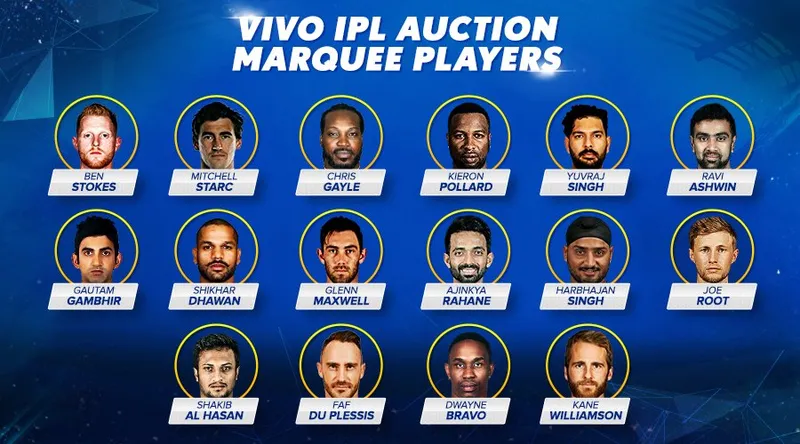IPL teams have peaked visibility and scale, but can they ensure profit on a sticky wicket?
Like startups, most IPL teams are bleeding money even after ten years. Franchise owners need to spend cautiously.
That the Indian Premier League (IPL) is uber popular is fairly well-documented. But besides the fan frenzy surrounding it, the IPL is serious ‘business’ too.
IPL fetches significant moolah for the Board of Control for Cricket in India (BCCI) — the wealthiest sports body in the world — and is the richest sporting league worldwide in just a decade of existence.
In 2017, the IPL was valued at $3.8 billion by Brand Finance, a UK-based brand valuation consultancy. It had reached a peak valuation of $4.1 billion in 2010, but has hovered around the $3.5 billion-$3.7 billion mark otherwise.

If the IPL were to be viewed as a startup, it would draw parallels with some of India’s top unicorns — the likes of Ola, Paytm, etc. — in terms of valuation. When it comes to financial health, the IPL is a bit like Flipkart, India’s largest homegrown startup that, despite all its popularity and reach, has failed to turn a profit in a more than a decade.
Both IPL and Flipkart have scored when it comes to driving fan/customer engagement. But while revenues soared and revenue streams increased, especially for IPL, costs went up too. In ten years, only one IPL franchise has consistently turned a profit. Another recorded a profit in a single edition (2013-14) of the event, while six others have been in the red despite growing their revenues handsomely.
Perhaps franchises aren’t chasing profitability as yet. Building a loyal fan base has been their core strategy. It is similar to what e-commerce platforms did in the initial years of the Indian startup boom. Customer acquisition was the buzzword, and it was a given that profitability would be a derivative of that at some point.
Talking to YourStory, Indranil Das Blah, Founding Partner of KWAN (a sports and talent management firm) says, “Typically, sports franchises across the world take seven to eight years to be profitable. IPL teams have taken a bit longer, but they have built a strong brand in the process. Sports ownership is always meant for the long term. Franchises do not chase short-to-medium term results.”
So, how does Kolkata Knight Riders (KKR) continue to be cash-positive for successive years?
Sponsors chase ‘stars’
KKR, owned by Bollywood megastar Shah Rukh Khan, has been the only profitable franchise in the IPL. Much of it has to do with its star owner and the lucrative deals and sponsorships he’s able to command. Brands associating with the IPL love to see SRK sporting their logos on the team jersey. Hence, most brands make a beeline to sponsor KKR, which is the most valuable IPL franchise by a fair margin, according to Brand Finance.
On an average, teams garner 12-15 sponsors per season. “KKR can get more than 20, and the sponsorship rates are the highest too,” says Blah. In the initial years of the IPL, most brands that SRK endorsed individually were roped in as KKR sponsors. Nokia, for instance, was the longest-running sponsor in IPL until 2015. The Nokia logo would be prominently displayed on the front of KKR jerseys.

The other two popular franchises when it comes to sponsorships are Mumbai Indians (MI) and Royal Challengers Bangalore (RCB). Both teams have star-studded line-ups, and sponsors naturally prefer associating with known names and ‘icons’. While RCB reported the highest loss out of eight IPL franchises, its marquee players — Virat Kohli, AB De Villiers and Chris Gayle — ensured there was never a dearth of marketing support.
It is almost as if VCs are taking a bet on startup founders more than their business ideas. KKR, MI, CSK and RCB have been able to command high sponsorship rates, according to KWAN. It is because of the celebrated names they have stuffed their teams with.
Those that are dry
On the contrary, franchises like Delhi Daredevils (DD), Kings XI Punjab (KXIP) and Rajasthan Royals (prior to the ban) really “struggled”.
The dearth of starry names, sustained poor performances in the league, along with match locations have contributed to poor financials for DD and KXIP. “Delhi is a very difficult sports market. Sponsorships are difficult to get. Punjab suffers because it plays its game in a non-prime location,” explains Blah.
So, on an average, if a KKR makes Rs 70-80 crore in sponsorship revenues per season, a KXIP would make Rs 30-35 crore at best. The difference is significant and has almost segregated IPL franchises into two distinct halves.
Strangely enough, KXIP made a profit in 2014 when it faced off with KKR in the finals. It earned a handsome prize money (through the play-offs and the final) which helped it recover costs, albeit briefly.
However, a run of poor performances by both KXIP and DD have compelled them to restructure player salaries, cut down on support staff and large-scale branding/marketing activities.
Other than sponsorships, there are licensing and merchandising deals through which franchises earn a fair amount. Popular teams like KKR, MI, RCB and CSK can negotiate better with manufacturers and retailers.
Despite serving a two-year ban following spot-fixing allegations, CSK's brand value has not depleted, say experts. A lot of it has to do with Mahendra Singh Dhoni’s association with the franchise. An icon in Indian cricket, deals follow Dhoni into the team.

2018, a game changer?
This year, the first big refresh has been in broadcasting. After ten years, the IPL would be shown on a different channel. Star India has paid an astronomical Rs 16,000-plus-crore for the television, digital and global rights of IPL for five years.
As a result, the broadcaster fee earned by BCCI will go up significantly. Franchises, which get a flat 50 percent of that, will also see their “revenues increase drastically” according to IPL trackers. “It could be a 50-percent rise in topline,” says Blah.
Star India recently announced that it would be broadcasting the IPL across multiple Star Sports feeds in six languages (English, Hindi, Tamil, Telugu, Kannada and Bengali). This will open up the sponsorship market and throw local, regional advertisers in the pool too.
A franchise like Sunrisers Hyderabad, for instance, can benefit from it. In just two years, it has made some noise by being the IPL winners in 2017. Prize money, coupled with rising sponsor interest, would reflect well on its financials.
Gate revenues, especially in the metro centres, are also likely to go up. Then there is the event sponsorship revenue.
On an average, event sponsorship is an expensive exercise. VIVO has retained IPL’s title sponsorship for Rs 2,199 crore for the next five years. That is an astounding 554 percent increase from the previous sponsorship amount.
In 2018 alone, IPL would be earning Rs 440 crore from VIVO. That amount would also be split among the franchises after BCCI takes its cut. Hence, on the revenue front, things are looking up across the board.
On the overhead front, franchises have to be smart in the upcoming auctions. Overspending on just one department is avoidable — something startups are continually reminded of. They are told to balance their investments across product, engineering, marketing and so on. Sports franchises too have to maintain the right mix.
Sometimes they go wrong. RCB, for instance, has come under criticism in the past for packing its team with too many big batsmen, leaving very little in its auction purse for getting accomplished bowlers. Team-owners are better off bidding for value-for-money players as opposed to resting on legacy names — where the ‘acquisition cost’ is steep.







